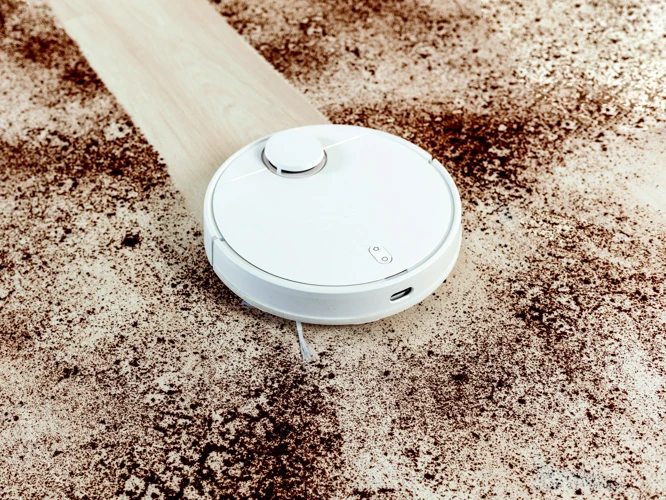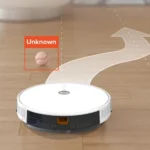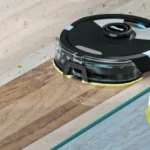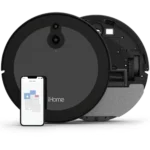Picture yourself enjoying your favorite TV show while your smart vacuum cleaner is supposed to do all the cleaning. Suddenly, you hear the sound of the vacuum struggling and notice it’s stuck in one spot. You wonder, why did it get stuck? Is it a common issue with smart vacuums? The answer is yes. However, don’t let this minor setback discourage you from enjoying the convenience of a smart vacuum. In this article, we’ll explore the top 5 reasons why your smart vacuum cleaner might get stuck and provide you with step-by-step solutions to fix them. So, sit back, relax, and let’s dive in!
Reason 1: Obstacles on the Floor

It is always a relief to have a smart vacuum cleaner that can take care of the household cleaning while you relax or do other things. However, what happens when your vacuum cleaner gets stuck during operation? One of the most common culprits is obstacles on the floor. The vacuum cleaner may come across obstacles such as toys, shoes, or furniture legs. This can cause the vacuum to get stuck and unable to finish cleaning. In this section, we will discuss the causes of obstacles on the floor and how to fix them to prevent your smart vacuum cleaner from getting stuck in the future. For more tips on how to prevent your smart vacuum cleaner from getting stuck, check out our article.
What Causes Obstacles on the Floor?
It’s common for smart vacuum cleaners to get stuck on obstacles on the floor. Obstacles on the floor come in different forms, such as toys, cables, shoes, and even pet hair. When there are too many obstacles on the floor, the smart vacuum cleaner may get stuck or even shut down.
In many cases, obstacles on the floor are caused by poor housekeeping practices. Failure to pick up clothes, toys, and other loose items from the floor could lead to the smart vacuum cleaner getting stuck. When objects are left on the floor, the smart vacuum cleaner may get entangled and become stuck in the process.
Another factor that can cause obstacles on the floor is poor flooring. Some types of flooring material, such as shag carpets, have a higher tendency to trap debris, which could get in the way of the smart vacuum cleaner.
Some obstacles on the floor may not be visible to the human eye. For instance, pet hair may be hard to spot, especially on carpets with busy patterns. Pet hair and other invisible objects could get tangled in the smart vacuum cleaner’s brushroll, causing it to get stuck.
Now that we understand what causes obstacles on the floor, it’s time to look at how to fix the issue. Head over to our Smart Vacuum Cleaner Stuck Solutions page to learn how to troubleshoot your smart vacuum cleaner when it gets stuck.
How to Fix It
Here are the step-by-step instructions on how to fix each of the common reasons why your smart vacuum cleaner gets stuck:
Reason 1: Obstacles on the Floor
- Remove any large obstacles on the floor before running your smart vacuum cleaner.
- If you have pets, make sure their toys are put away before running the vacuum.
- Use a virtual barrier to block off areas that you don’t want the vacuum to go to.
Reason 2: Low Battery Power
- Make sure your smart vacuum cleaner is properly charged before starting it.
- Check the battery status on the app to ensure it has enough power to complete the cleaning task.
- If your smart vacuum cleaner is running low on battery during a cleaning session, it will automatically return to its dock to recharge.
Reason 3: Tangled Brushroll
- Tangled brushrolls can be easily fixed by removing them and cutting away any tangled hair or debris.
- Make sure to clean the brushroll regularly to prevent it from getting tangled in the first place.
Reason 4: Dirty Sensors
- Use a microfiber cloth to wipe the sensors clean and remove any dust or debris.
- Make sure to clean the sensors regularly to prevent them from malfunctioning.
- Consider using a smart vacuum cleaner with smart mapping technology that prevents it from getting stuck and can navigate around objects on its own.
Reason 5: Software Issues
- If your smart vacuum cleaner is experiencing software issues, try resetting it to its factory settings.
- Check for any software updates on the app and make sure your smart vacuum cleaner is up to date.
- If the problem persists, contact customer support for assistance.
By following these steps, you can easily fix the most common reasons why your smart vacuum cleaner gets stuck. Remember to take preventive measures, such as cleaning and charging regularly, to minimize the chances of encountering these issues. If you’re looking for a smart vacuum cleaner that can prevent getting stuck, consider purchasing one with smart mapping technology such as Smart Mapping.
Reason 2: Low Battery Power
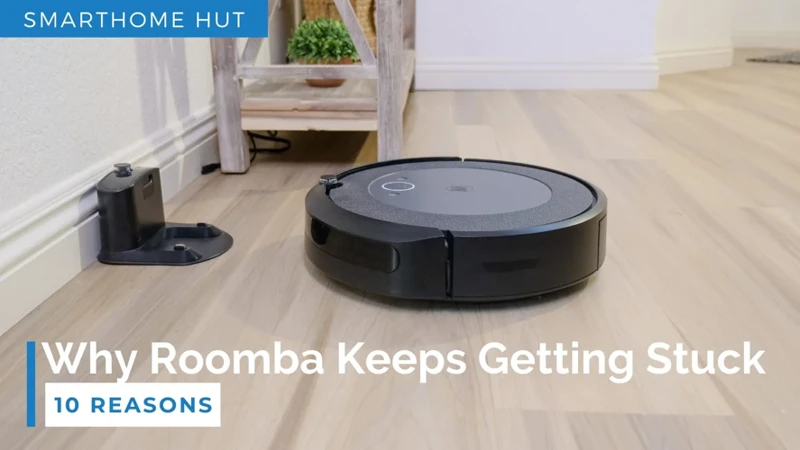
As you sit back and relax, letting your smart vacuum cleaner do the work for you, it suddenly stops and gets stuck in the middle of cleaning. One of the most common reasons this may happen is due to low battery power. This issue can be frustrating, especially if you’re in the middle of a cleaning session. But don’t worry, we’ve got you covered with some solutions that will have your vacuum back up and running in no time! Keep reading to find out how to fix low battery power in smart vacuum cleaners. And if you’re interested in learning about other reasons why your smart vacuum cleaner may get stuck, check out our previous article about Top 5 Common Reasons Why Your Smart Vacuum Cleaner Gets Stuck and How to Fix Them.
What Causes Low Battery Power?
Low battery power is a common issue that can cause a smart vacuum cleaner to get stuck mid-clean. There are several reasons why your vacuum cleaner may be running low on battery power, including:
- Long cleaning cycles: If you set your vacuum cleaner to clean for an extended period of time, it may drain the battery power faster than normal.
- Old batteries: Over time, rechargeable batteries can lose their ability to hold a charge, which can result in a shorter battery life.
- Not properly charging: If you don’t fully charge your vacuum cleaner before using it, it may not have enough power to complete the cleaning cycle.
- Power-hungry features: Features such as strong suction power or mapping technology can use up more battery power than basic models.
- Overuse: Using your vacuum cleaner too frequently can result in the battery losing its ability to hold a charge and degrading faster.
It’s important to note that while low battery power may be a common issue, it can be easily resolved. By following a few simple steps, you can keep your vacuum cleaner running smoothly and prevent it from getting stuck mid-clean.
How to Fix It
To fix the issue of “obstacles on the floor“, follow these steps:
| Step | Description |
|---|---|
| Step 1 | Remove all the clutter from the floor |
| Step 2 | Make sure the vacuum has enough space to move around |
| Step 3 | Clear the edges of furniture as the vacuum may get stuck in those areas |
To fix the issue of “low battery power“, try the following:
| Step | Description |
|---|---|
| Step 1 | Charge your vacuum completely |
| Step 2 | Check the battery life and replace the battery if required |
To fix the issue of “tangled brushroll“, here are the steps:
| Step | Description |
|---|---|
| Step 1 | Unplug the vacuum cleaner |
| Step 2 | Manually remove the tangled debris from the brushroll |
| Step 3 | Use scissors or a blade to cut the hair or thread stuck in the brushroll in a careful manner |
To fix the issue of “dirty sensors“, try the following:
| Step | Description |
|---|---|
| Step 1 | Unplug the vacuum cleaner |
| Step 2 | Clean the sensors with a soft, clean cloth |
| Step 3 | Use a cotton swab to clean dirt in hard-to-reach areas |
Finally, to fix the issue of “software issues“, consider the following:
| Step | Description |
|---|---|
| Step 1 | Check for software updates on the manufacturer’s website or mobile app |
| Step 2 | Reset the vacuum cleaner and reprogram it using the instructions from the manual |
Remember, these steps can help fix common issues with smart vacuum cleaners. If the problem persists, contact the manufacturer for additional support.
Reason 3: Tangled Brushroll
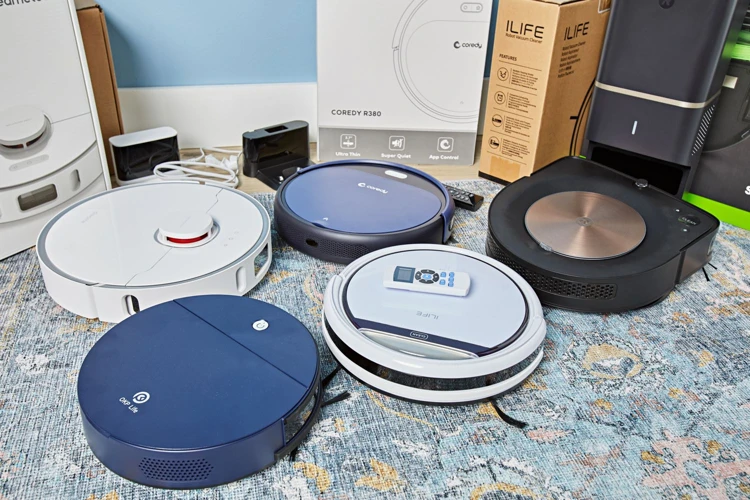
Have you ever encountered the frustrating scenario of your smart vacuum cleaner getting stuck in the middle of a cleaning session? One of the most common reasons for this is a tangled brushroll. This occurs when the brushroll becomes clogged with hair, string, or other debris, causing it to cease functioning properly. The result is that your vacuum cleaner stops in its tracks and is unable to complete its job. But don’t worry, there are simple steps you can take to fix this problem, and in this section, we’ll highlight some of the most effective solutions.
What Causes the Brushroll to Tangle?
When it comes to smart vacuum cleaners, the brushroll is one of the most important parts as it helps to pick up debris and dirt effectively. However, there are times when the brushroll gets tangled, which can be frustrating. There are various reasons why this might happen, as summarized in the table below:
| Causes of Brushroll Tangles: | Description: |
|---|---|
| Dangling Cords or Wires | Loose cords or wires on the floor can get wrapped around the brushroll. |
| Long Hair or Fur | Long hair or fur of pets can get tangled in the brushroll. |
| Large Debris | Bigger debris, such as plastic or toys, can also cause the brushroll to get tangled. |
| Build-up of Dirt or Dust | Dirt or dust accumulation can lead to the brushroll getting sticky, which in turn can cause it to tangle. |
Brushroll tangles can be prevented with proper cleaning and maintenance of the vacuum cleaner. It is important to clear the floor of any cords, wires, or debris before using the vacuum. Additionally, the brushroll should be checked and cleaned regularly, especially if you have pets in the house. You can use a pair of scissors or a brush to remove any tangled hair or debris from the brushroll. By taking good care of your vacuum cleaner, you can ensure that it works optimally and lasts for a long time.
How to Fix It
Certainly! Here are step-by-step solutions for fixing each of the top 5 common reasons why your smart vacuum cleaner gets stuck.
Fixing Obstacles on the Floor
- First, identify the object that is causing the obstacle on the floor.
- Remove the object from the floor.
- Inspect the wheels and brushes to ensure there are no more objects or debris stuck in them. If so, remove them carefully to avoid any damage.
- If the vacuum cleaner still seems to be having difficulty navigating around the room, try rearranging furniture or other objects to create a clear path.
Fixing Low Battery Power
- Plug your vacuum cleaner into a power source first, and ensure the power outlet is working.
- Check the charging port, and make sure your vacuum cleaner is properly connected to the charging station while charging.
- If you have a cordless vacuum cleaner, allow it to charge completely, this usually takes a few hours, before using it again.
- If you have a vacuum cleaner with replaceable batteries, consider purchasing a new battery if the old one is worn out or not holding the charge well.
Fixing Tangled Brushroll
- First, turn off the vacuum cleaner to avoid further damage.
- Remove the brushroll cover carefully and pull off any hair, strings, or other debris that may be stuck around the brushroll.
- Cut through any large tangles with scissors to loosen them from the brushroll.
- Manually rotate the brushroll to check for any other debris and remove it gently with your fingers or a small brush.
- Replace the brushroll cover and turn on the vacuum cleaner.
Fixing Dirty Sensors
- First, check the instruction manual to identify where the sensors are located.
- Use a clean, dry cloth to carefully wipe down the sensors without using any liquid or cleaning agents.
- A soft-bristled brush may help to remove any stubborn dirt or debris on the sensors.
- Check the sensors again for any missed debris and ensure they are clean before using the vacuum cleaner again.
Fixing Software Issues
- First, check if there are any software updates available for your vacuum cleaner, and if so, update the software to the latest version.
- Restart the vacuum cleaner to see if this resolves the issue.
- If the software issue persists, try resetting the vacuum cleaner to its default settings, and reconfigure it again.
- Contact the manufacturer’s technical support team for further assistance if you are still experiencing software problems.
As always, it’s important to read the instruction manual carefully before attempting to troubleshoot or repair your vacuum cleaner to avoid causing any further damage.
Reason 4: Dirty Sensors
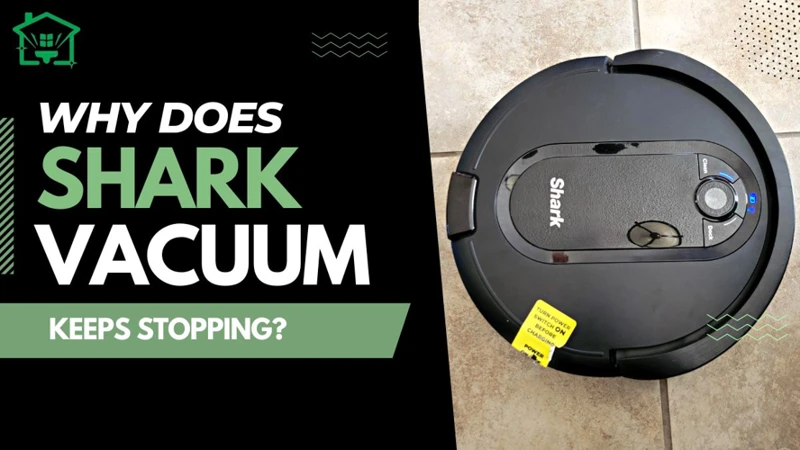
As your smart vacuum cleaner works hard to keep your floors dirt-free, it heavily relies on accurate sensors. However, over time, these sensors can become covered in dirt and grime, causing them to malfunction. If you’re experiencing issues with your smart vacuum getting stuck or missing spots on the floor, dirty sensors may be the culprit. Don’t worry, though. With simple cleaning methods, you can easily restore your vacuum’s sensors to their optimal functioning level. Let’s dive into the causes and solutions for dirty sensors.
What Causes the Sensors to Get Dirty?
Sensors play a crucial role in the functioning of a smart vacuum cleaner. They detect and map out the cleaning area to avoid collisions with furniture and walls. However, over time, sensors can get dirty, which can cause problems with the cleaner’s movements.
What Are the Common Causes of Dirty Sensors?
The following table highlights the common reasons why sensors can get dirty and their effect on a smart vacuum cleaner:
| Cause | Effect on Smart Vacuum Cleaner |
|---|---|
| Dust and debris on the sensors | Can affect the sensor’s ability to detect objects and map out the cleaning area accurately. |
| Buildup of dirt on the charging contacts | Can prevent the vacuum cleaner from charging correctly, leading to a shorter battery life. |
| Oil and grease on the sensors | Can cause the sensors to malfunction or stop working altogether. |
| Moisture or liquid on the sensors | Can cause a short circuit or damage to the electronics, leading to a breakdown of the vacuum cleaner. |
To ensure optimum performance of a smart vacuum cleaner, it’s important to clean the sensors regularly. Dust, debris, and dirt can be removed with a soft cloth, while buildup on the charging contacts may need a bit of rubbing. However, if the sensors are damaged by oil, grease, or moisture, it’s best to contact the manufacturer or a repair specialist for assistance.
By keeping the sensors clean and in good working condition, a smart vacuum cleaner can continue to navigate and clean efficiently, without getting stuck or malfunctioning.
How to Fix It
When it comes to fixing the common reasons why your smart vacuum cleaner gets stuck, the solutions might vary depending on the issue at hand. Here are some steps you can take to get your vacuum cleaner back to full functionality:
| Issue | Solution |
| Obstacles on the Floor |
|
| Low Battery Power |
|
| Tangled Brushroll |
|
| Dirty Sensors |
|
| Software Issues |
|
Make sure to follow the manufacturer’s guidelines for maintenance and troubleshooting specific to your model of smart vacuum cleaner. With a little bit of effort and the right know-how, you can get your vacuum cleaner back to operating effectively in no time.
Reason 5: Software Issues
As high-tech smart vacuums have become increasingly popular, they have also become more complex, relying on intricate software systems to operate effectively. However, despite their significant technological advancements, these machines are not immune to software issues, which can cause them to malfunction and get stuck. These issues can be perplexing, leaving users scratching their heads as they try to figure out what’s causing the problem. In this section, we will explore some of the common software issues that can cause your smart vacuum cleaner to get stuck and offer solutions on how to fix them. So, let’s dive in and unravel the mystery behind these software glitches!
What Causes Software Issues?
One common reason why your smart vacuum cleaner may get stuck is due to software issues. These issues can cause the vacuum to malfunction, leading to unexpected stops and slowdowns. So, what exactly causes software issues in these devices? Here are a few possibilities:
- Outdated software: If you haven’t updated your vacuum’s software in a while, it may become outdated and unable to perform effectively. As a result, it may struggle to navigate through your home or get stuck on obstacles.
- Bugs and glitches: Like any other electronic device, smart vacuum cleaners can experience bugs or glitches that cause them to malfunction. These can come from a variety of sources, such as inconsistent Wi-Fi signals or programming errors.
- Compatibility issues: If you recently added a new device or appliance to your home, it’s possible that it’s causing compatibility issues with your smart vacuum cleaner. This can cause the vacuum to behave unexpectedly or even stop working altogether.
- Human error: Finally, it’s possible that the issues with your smart vacuum cleaner are due to user error. For instance, you may have accidentally deleted a key file or setting that’s necessary for the vacuum to function properly.
Regardless of the cause, it’s important to address software issues promptly to avoid further problems. In the next section, we’ll discuss some steps you can take to fix these issues and get your smart vacuum cleaner back on track.
How to Fix It
When your smart vacuum cleaner gets stuck, it can be frustrating, but fortunately, most issues can be easily fixed. Here are the solutions for the top 5 common problems:
| Reason | Solution |
|---|---|
| Obstacles on the Floor | Clear the Path: Start by removing any obvious obstacles like toys, cords, and shoes. You may also consider rearranging furniture to create wider paths. If your vacuum still struggles, try using boundary markers which prevent it from entering certain areas. |
| Low Battery Power | Charge the Battery: Check if your vacuum’s battery is running low. If so, plug it into its charging dock and ensure that it’s properly connected. Let it charge until the battery is full to get optimal cleaning performance. |
| Tangled Brushroll | Clean or Replace the Brushroll: Turn off your vacuum, and then remove its brushroll. Once you’ve removed the brushroll, use a pair of scissors to cut away tangled hair strands and debris. If the brushroll is severely damaged, consider replacing it. Consult your vacuum’s manual for instructions on removing and replacing the brushroll. |
| Dirty Sensors | Clean the Sensors: Use a soft cloth or brush to clean the sensors on your vacuum’s bottom. Ensure that the sensors are free from debris or dust. Check the manual for specific instructions on cleaning the sensors. |
| Software Issues | Reset and Reboot the Vacuum: Try resetting your smart vacuum cleaner to its default settings. Turn it off, unplug it, and wait for a few minutes before powering it up again. This will reset the internal software, and your vacuum should be back to functioning normally after the reboot. |
By following these simple solutions, you can easily fix the top five common reasons why your smart vacuum cleaner gets stuck.
Conclusion
After going through the common reasons why smart vacuum cleaners get stuck and how to fix them, it is important to emphasize that regular maintenance and careful usage of the device can prevent many of these issues.
Cleanliness is key. Ensuring that your floors are clear of obstacles before vacuuming will not only prevent your device from getting stuck but also help to maintain its longevity.
Battery maintenance is also crucial. Charging the device as recommended by the manufacturer and avoiding using the vacuum beyond its battery capacity can prevent low battery power issues.
Brushroll management is another crucial aspect of maintenance that can prevent tangles and clogs. Cleaning the brushroll regularly and checking for debris buildup in the device’s suction pathway can prevent many of these issues.
Protect your sensors. Keeping your vacuum’s sensors clean and free of debris is essential in ensuring that it works properly. Taking the time to wipe down sensors and avoid using the device in dusty or dirty environments will go a long way in preventing sensor issues.
Software updates are also important to ensuring the device runs smoothly. Regularly checking for software updates and installing them promptly can prevent glitches and other software-related problems.
By following these tips and taking proper care of your device, you can prevent many of the common reasons why smart vacuum cleaners get stuck and ensure that your device runs smoothly for years to come.
Frequently Asked Questions
1. Why is my smart vacuum cleaner not able to navigate smoothly around my house?
The most common reason is that there may be obstacles on the floor that are blocking its path.
2. Can low battery power cause my smart vacuum cleaner to get stuck?
Yes, when the battery is low, the vacuum cleaner may randomly stop and get stuck in one place.
3. How can I prevent my smart vacuum cleaner from getting stuck on power cords?
You should keep all power cords or charging cables properly organized and out of the way of the vacuum cleaner’s path.
4. Is it safe to manually remove the tangled brushroll of the vacuum cleaner?
Yes, it is safe to remove the tangled brushroll but make sure to turn the vacuum cleaner off first.
5. Can dirty sensors affect the performance of my smart vacuum cleaner?
Yes, dirty sensors can cause the vacuum cleaner to get stuck or navigate poorly.
6. Can I use any cleaning solution to clean the sensors of my vacuum cleaner?
No, it is recommended to use a gentle cleaning solution or just a damp cloth to clean the sensors.
7. What should I do if my vacuum cleaner’s software is outdated?
You should check for software updates provided by the manufacturer and install them accordingly.
8. How often should I clean the brushroll of my smart vacuum cleaner?
It is recommended to clean the brushroll at least once a week or after every few uses.
9. Can I use my smart vacuum cleaner on a carpeted floor?
Yes, most smart vacuum cleaners are designed to work on all types of floors including carpets.
10. What is the average lifespan of a smart vacuum cleaner?
The average lifespan of a smart vacuum cleaner is around 3-5 years depending on the usage and maintenance.
